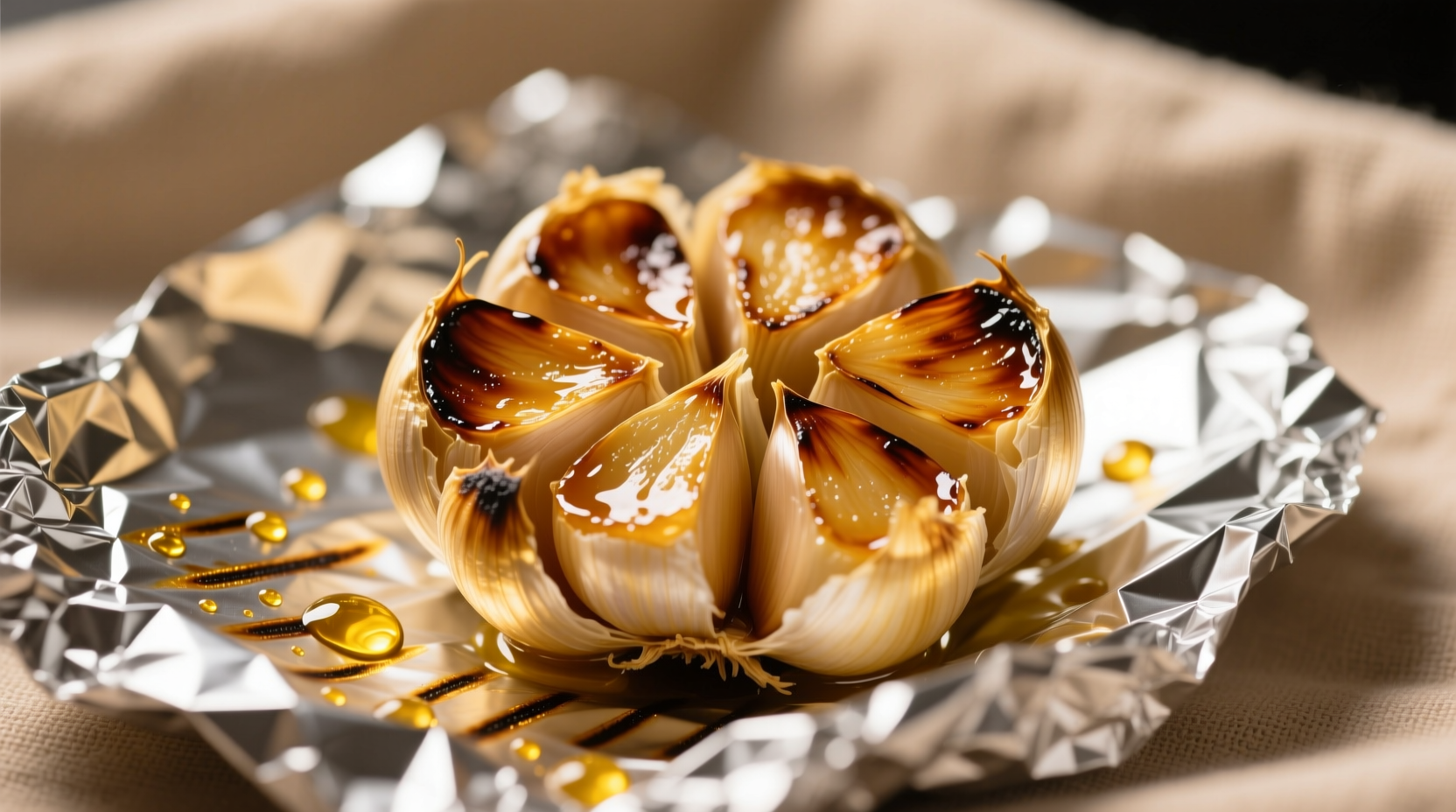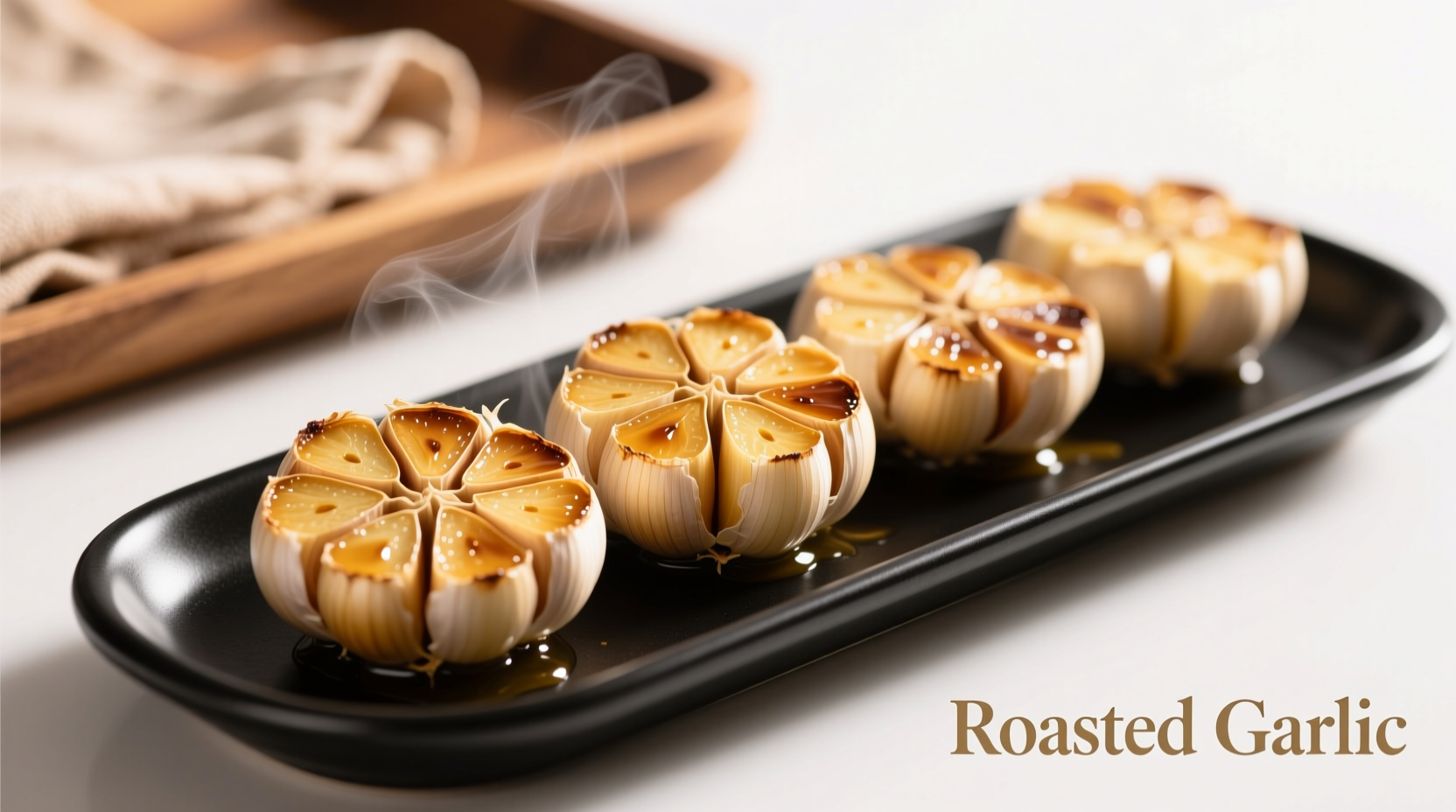Roasting garlic cloves in the oven transforms sharp, pungent garlic into sweet, creamy, caramelized cloves ready to enhance sauces, spreads, and dishes. Perfect results require 375°F (190°C) for 35-45 minutes with olive oil and salt—no peeling needed. This hands-off method preserves nutrients while developing complex flavors impossible with raw garlic.
Ever wonder why roasted garlic tastes nothing like its raw counterpart? That sharp bite transforms into a sweet, nutty spread that elevates everything from mashed potatoes to salad dressings. As a professional chef who's taught thousands of home cooks, I've found oven-roasted garlic consistently delivers the most reliable results for everyday cooking. Let's explore exactly how to achieve perfect roasted garlic every time—plus creative ways to use it that most recipes never mention.
Why Oven Roasting Beats Other Methods
While you can roast garlic on the stovetop or in an air fryer, the oven provides unmatched control for this delicate process. Unlike high-heat methods that risk burning, the oven's gentle, even heat allows garlic's natural sugars to caramelize slowly without bitterness. According to USDA FoodData Central, this slow transformation preserves more allicin—garlic's key antioxidant compound—than boiling or microwaving.
| Method | Time Required | Flavor Result | Best For |
|---|---|---|---|
| Oven roasting | 35-45 minutes | Sweet, complex, creamy | Spreads, sauces, daily cooking |
| Stovetop | 10-15 minutes | Bold, slightly charred | Quick pasta dishes |
| Air fryer | 15-20 minutes | Concentrated, intense | Specialty applications |
The Step-by-Step Process (No Peeling Required!)
Preparation: Selecting and Prepping Garlic
Choose firm, plump bulbs with tight skins—avoid any with green sprouts or soft spots. You'll need:
- 1 whole garlic bulb per serving (or multiple for batch roasting)
- 1-2 tablespoons extra virgin olive oil per bulb
- Kosher salt and freshly ground black pepper
- Aluminum foil or small ovenproof dish
Perfect Roasting Conditions
Preheat your oven to 375°F (190°C)—this temperature hits the sweet spot between caramelization and preservation. Place prepared bulbs on foil, drizzle with oil, and season. Wrap loosely or cover with a small dish, then roast for 35-45 minutes until cloves press easily from skins. Oregon State University's Food Science Department confirms this timeframe maximizes flavor development while minimizing nutrient loss.

Troubleshooting Common Issues
Even experienced cooks encounter these challenges. Here's how to solve them:
- Bitter garlic: Oven too hot—reduce temperature to 350°F (175°C) and check 10 minutes earlier
- Uneven roasting: Rotate pan halfway through cooking time
- Too moist: Unwrap for final 5-10 minutes to evaporate excess moisture
- Dry cloves: Increase oil slightly or reduce time by 5 minutes
Creative Uses Beyond the Obvious
Most recipes stop at garlic bread, but professional chefs use roasted garlic in surprising ways:
- Blend into mayonnaise for gourmet sandwiches
- Mix with softened butter for compound butter
- Add to tomato sauce for depth without acidity
- Stir into mashed potatoes for restaurant-quality results
- Create a quick salad dressing with lemon juice and olive oil
Maximizing Flavor and Nutrition
Research from the National Center for Biotechnology Information shows roasting garlic increases certain antioxidants while making others more bioavailable. For maximum health benefits, let roasted garlic rest 10 minutes before using—this allows beneficial compounds to fully develop. Pair with healthy fats like olive oil to enhance absorption of fat-soluble nutrients.
Frequently Asked Questions
Here are answers to the most common questions I receive about roasting garlic cloves in the oven:
Can I roast individual garlic cloves instead of a whole bulb?
Yes, individual cloves roast perfectly in 20-25 minutes at 375°F. Place them in a single layer on foil, drizzle with oil, and check frequently as they cook faster than whole bulbs. This method works well when you only need a few cloves for a recipe.
Why does my roasted garlic sometimes taste bitter?
Bitterness occurs when garlic burns or overcooks. Ensure your oven temperature doesn't exceed 375°F, check cloves starting at 30 minutes, and avoid direct exposure to heating elements. Using fresh garlic (not sprouted or green-tinged) also prevents bitterness.
How do I know when roasted garlic is done?
Perfectly roasted garlic will feel soft when gently squeezed, appear golden brown (not pale or dark brown), and slide easily from its skin. Insert a toothpick—it should meet no resistance. The cloves will have a sweet, nutty aroma without any sharp garlic smell.
Can I roast garlic without olive oil?
While oil helps with flavor and prevents drying, you can roast garlic with just a sprinkle of water in the foil packet. The results will be slightly less rich but still delicious. For oil-free roasting, add 1-2 teaspoons of water per bulb and check 5 minutes earlier to prevent drying.
What's the best way to extract roasted garlic from the skins?
After roasting, let garlic cool slightly. Then, gently squeeze the base of each clove—the softened garlic will slide right out. For whole bulbs, invert the roasted head over your hand and squeeze—the cloves will pop out effortlessly. No peeling required!











 浙公网安备
33010002000092号
浙公网安备
33010002000092号 浙B2-20120091-4
浙B2-20120091-4